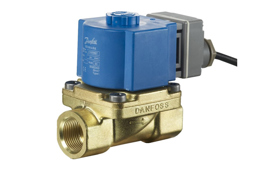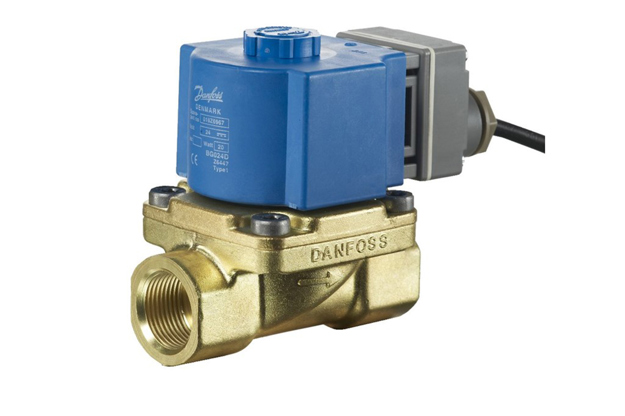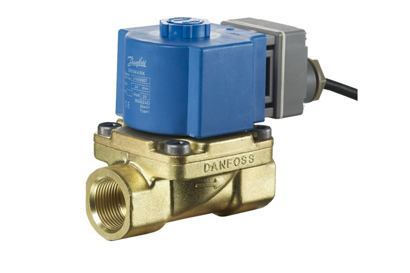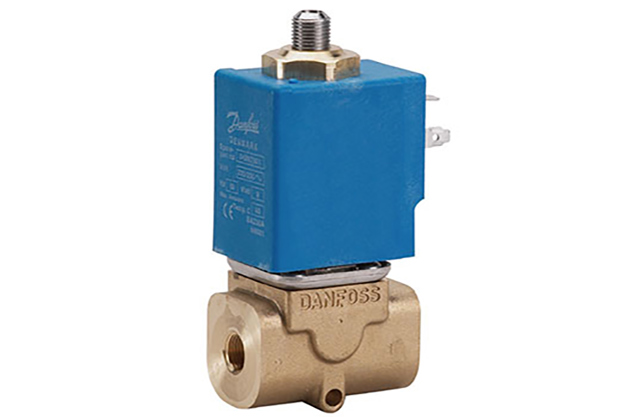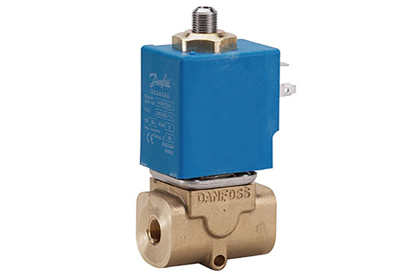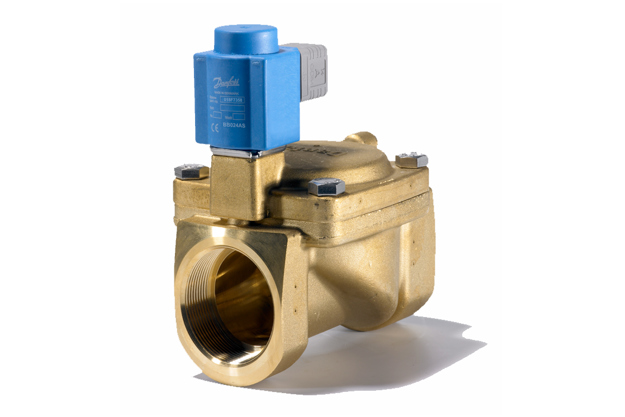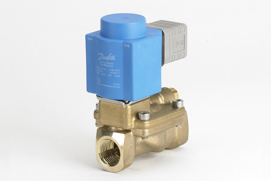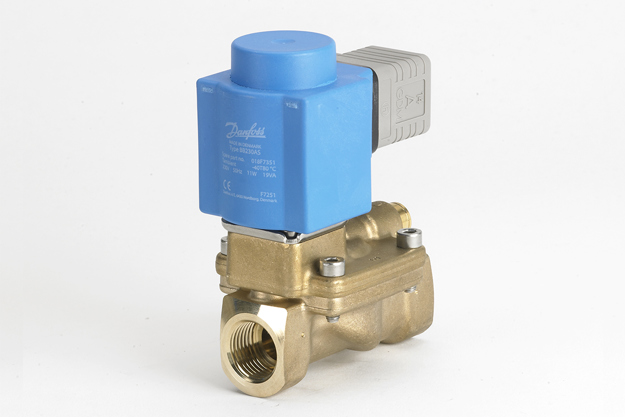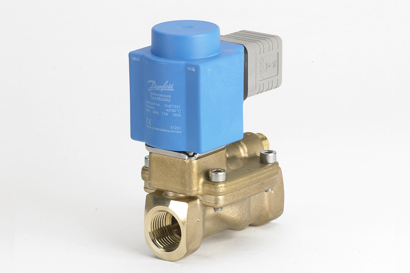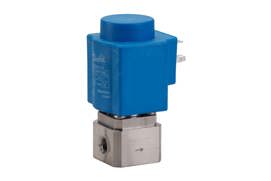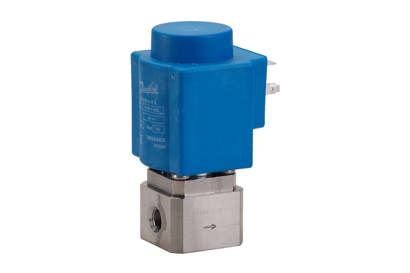Efficiently controlling fluids
Danfoss offers an exceptionally wide range of high performance solenoid valves, available in direct-operated, servo-operated and assisted lift versions. An easy, economical way to control and regulate fluids and gases. Danfoss solenoid valve bodies and electrical coils are normally supplied separately and then combined, but the valves are also available as complete units if required.

Test solenoid coils easily with Magnetic Tool
Ensuring that a solenoid valve coil is working properly, or detecting a faulty one, is an important step in many repair or installation projects.
We offer a general B valve series with a high capacity and the A series is more economic and compact. Danfoss solenoid valves are assembled quickly and simply without tools, providing optimum product flexibility and availability. A coil can be replaced if needed without stopping or draining the system.
Applications for solenoid valves
Our solenoid valve program includes valves for air, steam, oil, and gas, suiting a number of industrial applications that require high performance in these and other applications:
- Laundry and dry-cleaning equipment
- Industrial washing equipment
- Autoclaves/sterilizers
- Compressors and vacuum pumps
- Plastic moulding machinery
- Steam boilers
- Food processing machinery
- Sprinklers and fire fighting systems
- Dentist equipment
- Coffee machines
- Boilers

Solenoid valve selector
The tool is intended to make it easy for installers and end-users to specify the correct industrial solenoid valves for a range of standard applications.

New solenoid valves for drinking water
WRAS and RISE approved solenoid valves ensure your compliance. Danfoss solenoid valves are the clever choice for installers and the safe choice for drinking water.
Features and benefits
Clip-on coil
Coil range up to IP67
Best water hammer damping
Long lifetime and high
performance
Insensitive to dirt
Broad range and customized solutions
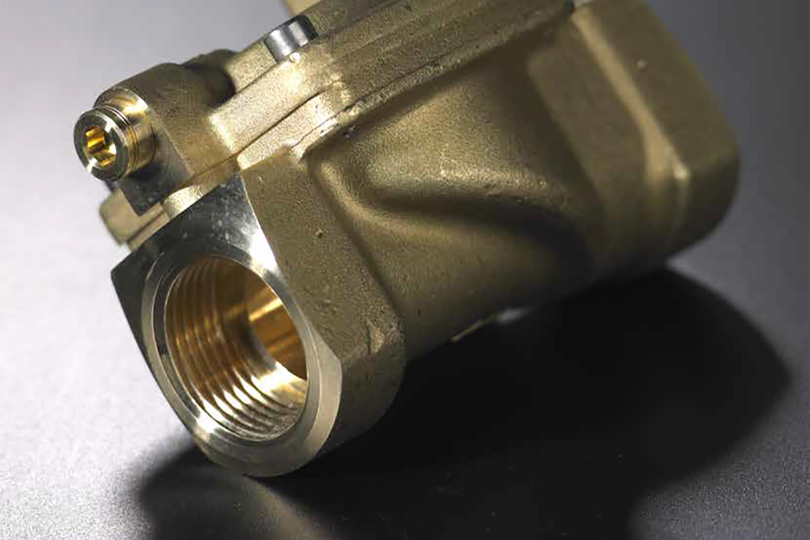
Protect your system - Hammer your costs
Solenoid, angle seat and thermostatic valves - a fluid control product overview.
Documents
| Type | Name | Language | Valid for | Updated | Download | File type |
|---|---|---|---|---|---|---|
| Brochure | Fluid Controls overview | Italian | Italy | 09 Oct, 2024 | 2.4 MB | |
| Brochure | Fluid Controls overview | Swedish | Sweden | 14 Feb, 2024 | 2.6 MB | |
| Brochure | Fluid Controls overview | Finnish | Finland | 21 Dec, 2023 | 631.5 KB | |
| Brochure | Fluid Controls overview | French | France | 23 Mar, 2022 | 509.3 KB | |
| Brochure | Fluid Controls overview | Korean | South Korea | 23 Mar, 2022 | 545.9 KB | |
| Brochure | Fluid Controls overview | English | Multiple | 14 Feb, 2024 | 2.4 MB | |
| Brochure | Fluid Controls overview | English | United States | 23 Mar, 2022 | 410.8 KB | |
| Brochure | Fluid Controls overview | Portuguese | Brazil | 23 Mar, 2022 | 502.1 KB | |
| Brochure | Fluid Controls overview | Danish | Denmark | 21 Nov, 2024 | 1.1 MB | |
| Brochure | Fluid Controls overview | Polish | Poland | 23 Mar, 2022 | 536.4 KB | |
| Brochure | Fluid Controls overview | Chinese (CN) | China | 23 Mar, 2022 | 690.4 KB | |
| Brochure | Fluid Controls overview | German | Germany | 23 Mar, 2022 | 539.9 KB | |
| Brochure | Fluid Controls overview | Spanish, Castilian | Spain | 23 Mar, 2022 | 509.6 KB | |
| Brochure | Fluid Controls Overview | Ukrainian | Ukraine | 13 Sept, 2023 | 593.6 KB | |
| User guide | How to use solenoid valves | Danish | Multiple | 10 Nov, 2015 | 1.7 MB | |
| User guide | How to use solenoid valves | Hungarian | Multiple | 22 Jan, 2016 | 3.1 MB | |
| User guide | How to use solenoid valves | French | Multiple | 10 Nov, 2015 | 1.8 MB | |
| User guide | How to use solenoid valves | Spanish, Castilian | Multiple | 10 Nov, 2015 | 1.7 MB | |
| User guide | How to use solenoid valves | Czech | Multiple | 10 Nov, 2015 | 1.8 MB | |
| User guide | How to use solenoid valves | German | Multiple | 10 Nov, 2015 | 1.8 MB | |
| User guide | How to use solenoid valves | English | Multiple | 10 Nov, 2015 | 1.7 MB | |
| User guide | How to use solenoid valves | Russian | Multiple | 10 Nov, 2015 | 1.8 MB | |
| User guide | How to use solenoid valves | Polish | Multiple | 29 Feb, 2016 | 3.1 MB |
Highlighted products
-
if (isSmallPicture) {


 EV260B, servo-operated 2-way proportional solenoid valves
EV260B, servo-operated 2-way proportional solenoid valvesEV260B is a proportional (modulating) servo-operated 2-way solenoid valve program with connections from 1/4” to 3/4”.Through stepless regulation of the coil current, the armature can be placed in any position in the armature tube, thus setting the valve to any position between completely closed and completely open.
-
if (isSmallPicture) {


 EV310B, direct-operated 3/2-way solenoid valves
EV310B, direct-operated 3/2-way solenoid valvesEV310B covers a wide range of direct-operated 3/2-way solenoid valves for universal use. EV310B is a real robust valve program with high performance and can be used in all kind of tough working conditions. Clip-on coils can not be used on EV310B.
-
if (isSmallPicture) {


 EV220BW 40-50 indirect servo-operated 2/2-way solenoid valves
EV220BW 40-50 indirect servo-operated 2/2-way solenoid valvesEV220BW 40-50 is an indirect servo-operated 2/2-way solenoid designed for drinking water and available in NC or NO. Valve sealings are available in EPDM, and the valve body is available in brass.
-
if (isSmallPicture) {


 EV220BW/EV228BW 15-50 an indirect servo-operated 2/2-way solenoid valves
EV220BW/EV228BW 15-50 an indirect servo-operated 2/2-way solenoid valvesThe EV220BW 15-50 is an indirect servo-operated 2/2-way solenoid valve designed for drinking water and available in NC, NO, or UN-latching. Valve sealings are available in EPDM, and the valve body is available in ECO brass or stainless steel.
-
if (isSmallPicture) {


 EV212B Solenoid valves with FKM isolating diaphragm 2/2-way direct-operated
EV212B Solenoid valves with FKM isolating diaphragm 2/2-way direct-operatedThe compact 2/2-way solenoid valve EV212B with an isolating diaphragm design ensures no fluid can enter the armature area meaning the valve can be used for aggressive fluids.
Learning
Case studies
-
if (isSmallPicture) {


 Leading ballast water tank systems manufacturer Techcross eliminates line blockages with Danfoss solenoid valves
Leading ballast water tank systems manufacturer Techcross eliminates line blockages with Danfoss solenoid valvesMore than 90 percent of global trade is transported by sea. As a ship's cargo is unloaded and loaded, ballast water is pumped in and out to maintain the vessel's stability – this equates to around 12 billion tons every year.
Articles
-
if (isSmallPicture) {


 How to comply with new Ballast water regulation
How to comply with new Ballast water regulationThis article explores the challenge of ballast water and the solutions required to comply with the new regulation.
-
if (isSmallPicture) {


 How to comply with new regulation for exhaust gas
How to comply with new regulation for exhaust gasIncreased focus on the environmental impact from the Marine industry drives new exhaust gas emission restrictions and regulation. The new regulation forces vessel owners and shipbuilders to implement new technical solutions to ensure compliance with local, regional and global legislation.

